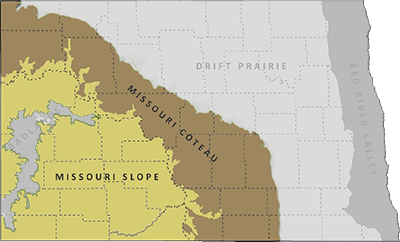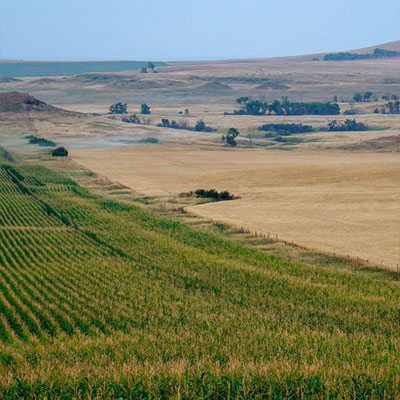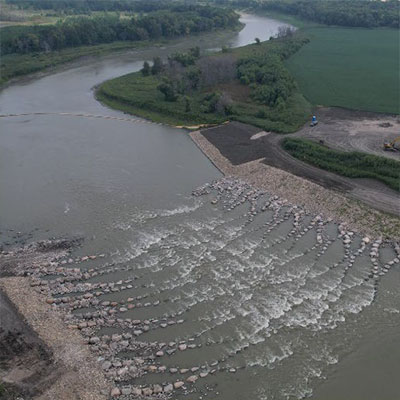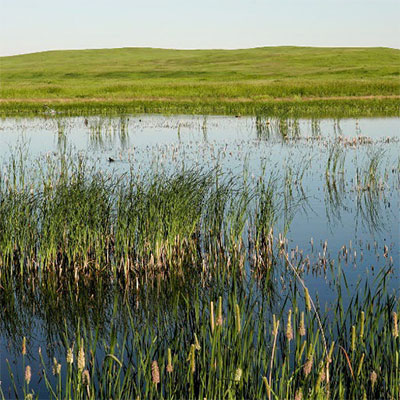Whooping Crane

NDGF
L 52”, WS 87”, 15 lb. All white except for black wing tips and a red crown, long black legs.
Status in North Dakota
Migrates through North Dakota in early April to mid-May and late September to mid-November.
Reason for SWAP Designation
Globally imperiled (SGCN a.).
The Whooping Crane was listed as a Federal endangered species on 3/11/1967.
The Whooping Crane population is increasing but it remains one of the rarest birds in the world.
Threats
Loss and degradation of wetlands, drainage and wetland consolidation.
Classified as climate-threatened, Whooping Crane is projected to lose more than half of its current distribution by 2080, with potential net gains of new areas (Audubon).
Increasing applications of agrochemicals and adverse impacts to water quality, the wetland vegetative community, and the aquatic invertebrate community.
Aquatic nuisance species spreading and damaging wetland ecosystems.
Human disturbance such as recreational boaters or birders at staging and stopover sites may disrupt normal behaviors or interrupt feeding.
Potential disturbance from oil and gas development and impact of environmental incidents (e.g.
oil, produced water/brine) on wetlands or oiled birds.
Coastal development (urban and industry sprawl), coastal erosion, storm surges, oil or industrial effluent spills, impaired water quality and microplastics are threats to wintering habitat.
Climate change impacts, environmental contaminants from oil sands, hydropower, and commercial logging are threats to breeding habitat.
Telemetry studies indicate avoidance of wind-energy infrastructure, but the long-term or lag effects of habitat loss are unknown.
High risk for collisions with transmission and overhead lines.
Poaching is rare but is a senseless cause of mortality.
Research and Monitoring
Habitat requirements and demographics have been extensively researched on the breeding grounds and throughout the full life cycle.
Ongoing GPS telemetry projects to study migratory ecology, breeding and wintering behaviors.
Continue outreach efforts to encourage the public to report Whooping Crane sightings in the spring and fall to appropriate key contacts.
The winter survey, led by the U.S. Fish and Wildlife Service, is a crucial monitoring effort for the Aransas-Wood Buffalo population.
Management Recommendations
- Refer to actions in the International Whooping Crane Recovery Plan.
- Protect and restore staging or stopover sites.
- Minimize or prevent human disturbance, such as educating the public about keeping safe distances.
- Use spatial models (e.g., Niemuth et al. 2018) to guide the siting of new wind, oil, and electrical transmission infrastructure to minimize potential conflicts with Whooping Cranes.
- Follow aquatic nuisance species rules and regulations.
- Follow beneficial or best practices during the design, siting, construction, operation, and maintenance of tall structures (e.g., transmission lines, communication towers, wind turbines).





